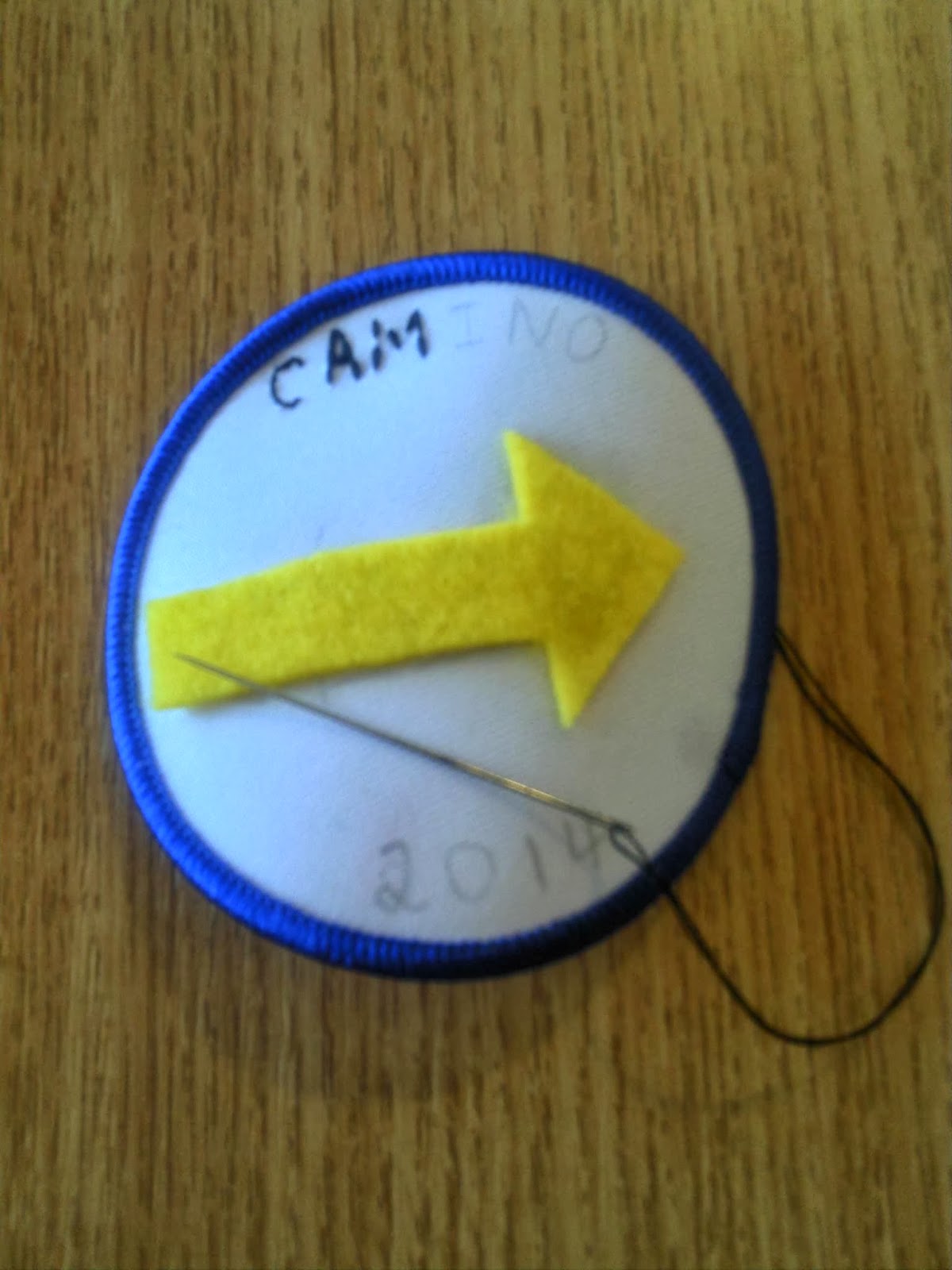I was trying to think of a gift to give to Becky and Dad before we set off on Camino - I wanted something that could be taken with them which automatically means that I wanted something light. I thought that something to hang off their bags would be cool and started to wonder what it could be: something made from beads maybe? then I remembered that a site that my Guide Unit has bought badges from once or twice makes blank badges to be decorated (they suggest that it can be done with fabric pens but even after ironing to set these I wasn't sure that they would be able to withstand Galician weather!) so I ordered three.
Next came the lettering - I did each in double thread to make them thicker
And a quick addition - my badge on my bag.
I'm not the best sewer so I decided to keep the design simple - as few words as possible (I would have liked to write 'Camino Portugues' and the full date but thought that this would be a little too complicated) and then an arrow (in yellow of course!) and then make an attempt at the Spainish and Portuguese flags (probably simplified)
I chose the badge with the navy border so it would match the Camino-theme, no choice on central colour though!
I drew my design on first with pencil but be careful, it doesn't rub off again afterwards - after the first one I only drew very lightly for the words
I also thought about just how much sewing the arrow would involve and decided to use felt for this instead and glue this on - then I sewed around the edges to make sure it was attached and hope the felt will be strong enough to stay on
Next came the lettering - I did each in double thread to make them thicker
Looks pretty good!
Then the flags - not very even but the best that I could do (I drew rectangles on first and then tried to sew inside these, I wasn't entirely successful)
All three of the badges done - working solidly on these took me about three and a half hours to do, this isn't an easy craft but the results look pretty good
And a quick addition - my badge on my bag.









Comments
Post a Comment